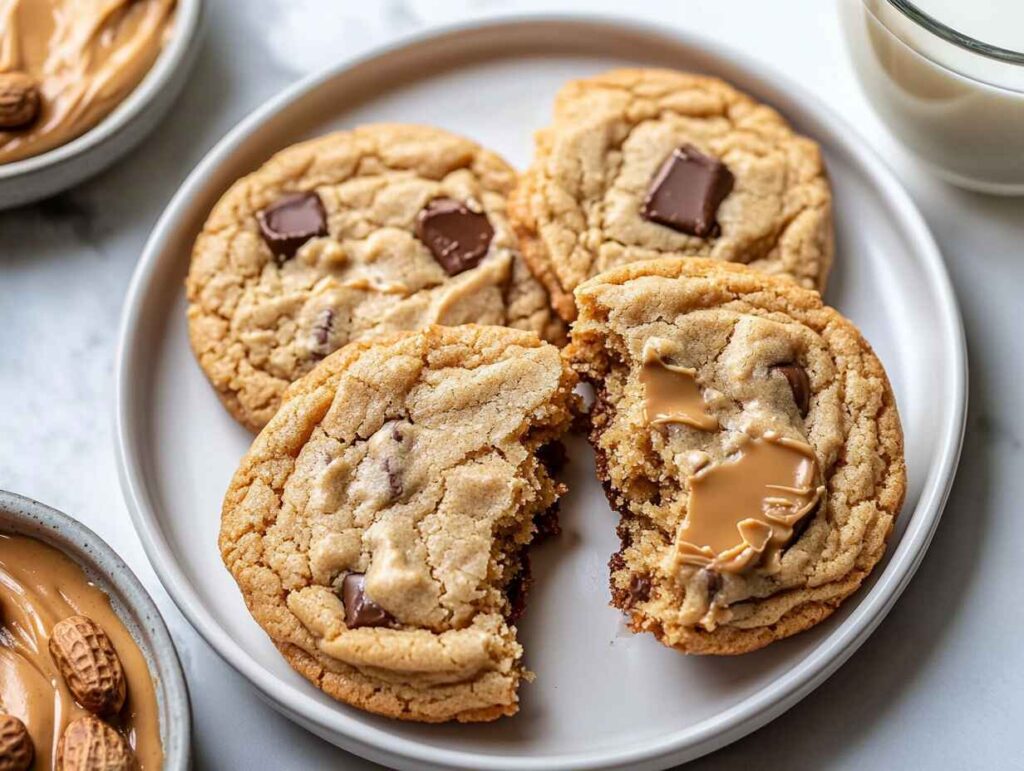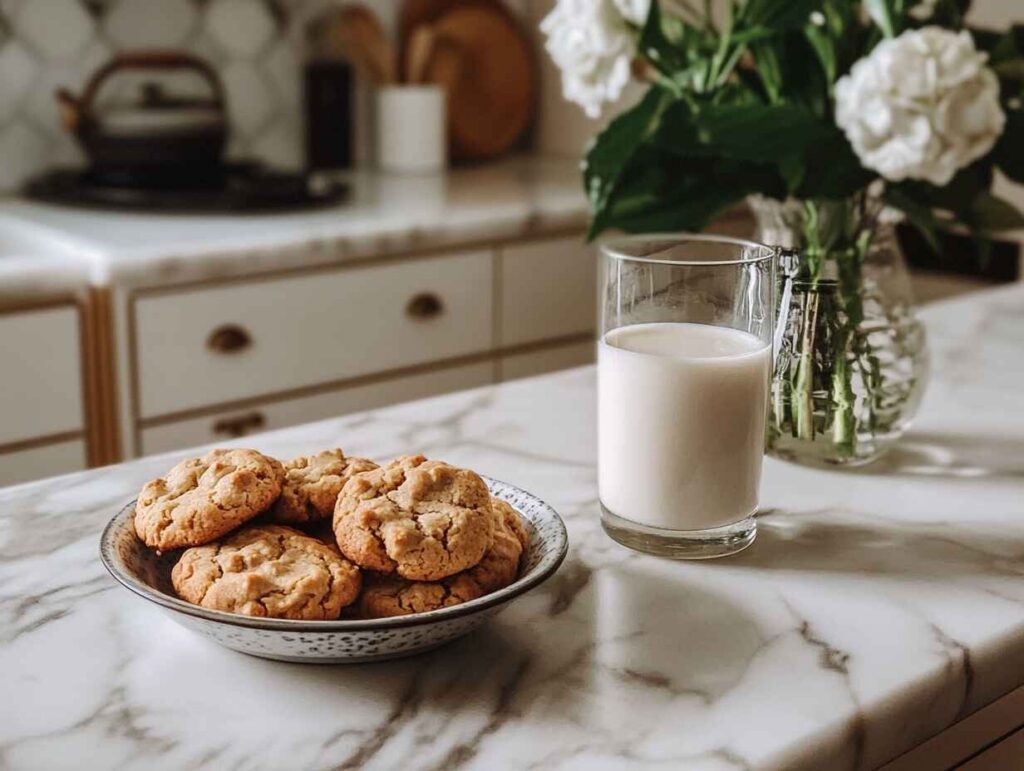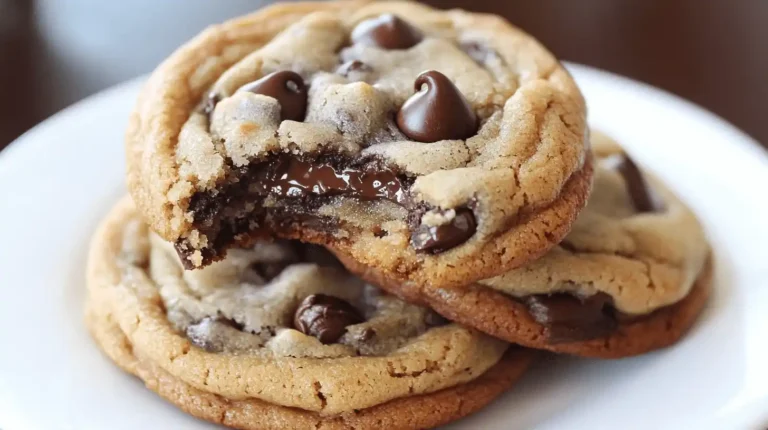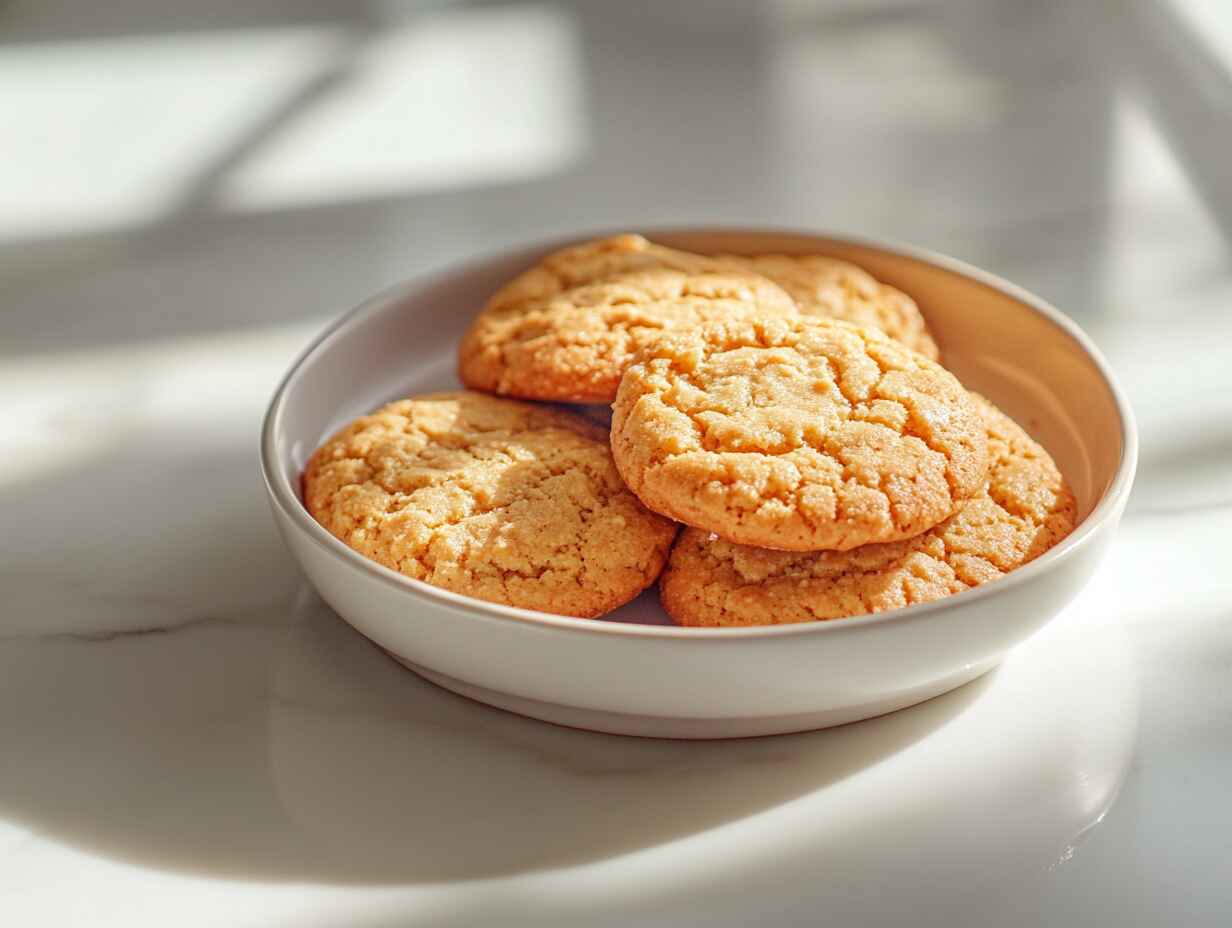If you’ve ever made peanut butter cookies that ended up too hard instead of soft and chewy, you’re definitely not the only one. It’s a common issue that many bakers face, and while it can be frustrating, the good news is that it’s entirely fixable. In this article, we’ll dive deep into the possible reasons why your peanut butter cookies get hard and offer practical solutions to help you achieve the perfect cookie texture every time.
Table of Contents
The Mystery of Hard Peanut Butter Cookies
Peanut butter cookies are a beloved treat for many, known for their rich, nutty flavor and soft, melt-in-your-mouth texture. But when they turn out hard and dry, it can be incredibly disappointing. You may have followed the recipe perfectly, so what went wrong? Well, there are several factors at play when it comes to cookie texture. From baking time to ingredient ratios, even small changes can have a big impact on how your cookies turn out.
In this article, we’ll explore some of the most common reasons peanut butter cookies end up hard, and more importantly, we’ll provide solutions to fix them. Whether you’re an experienced baker or a novice in the kitchen, these tips and tricks will help you troubleshoot and perfect your peanut butter cookie game.
Common Causes of Hard Peanut Butter Cookies
Before you can solve the problem of hard peanut butter cookies, it’s important to understand the reasons why they become hard in the first place. Let’s go over the most common causes of hard cookies, so you can pinpoint what went wrong and take the necessary steps to fix it.
Overbaking: The Main Culprit
One of the most common reasons peanut butter cookies get hard is overbaking. It might sound simple, but it’s easy to leave your cookies in the oven for just a bit too long. The cookies continue to cook even after you take them out of the oven, so if you leave them in for too long, they can dry out and become hard. Did you know that understanding the secret ingredient to keep cookies soft can be a game-changer?
“The secret to perfect peanut butter cookies? Don’t overbake them!”
Solution: To avoid overbaking, keep a close eye on your cookies as they bake. Remove them from the oven when they’re just starting to brown at the edges, and remember they will continue to cook on the baking sheet. It’s better to underbake slightly than to overbake, as your cookies will set up nicely without getting too hard.
Using Too Much Flour: How It Affects Texture
Flour plays a critical role in the texture of your cookies. Too much flour can make your dough dense and lead to cookies that are hard and dry. When you measure flour, it’s essential to avoid packing it into the measuring cup. Instead, use a spoon to scoop the flour into the cup and level it off with a knife. Packing flour in can result in using more flour than necessary, which will negatively affect the texture of your cookies. Try the technique mentioned in 4-ingredient peanut butter cookies for a foolproof balance.
Flour is essential for your cookies, but using too much can lead to a tough texture!
Solution: Measure your flour carefully to ensure you’re using the right amount. If you’re unsure, it’s always a good idea to weigh your flour to ensure consistency. If you’re following a recipe and it seems like your dough is too dry, you can always add a little more butter or liquid to balance it out.
Incorrect Oven Temperature: Why It Matters
Your oven temperature can also make a big difference in how your peanut butter cookies turn out. An oven that’s too hot can cause the cookies to bake too quickly, making them dry and hard. Conversely, if the oven is too cool, the cookies might spread too much or not bake evenly, which can lead to uneven texture. For more on the science behind perfect baking, check out Why do they put fork marks in peanut butter cookies?.
“An oven thermometer is a small investment that can make a big difference in your baking.” 🍪
Solution: Use an oven thermometer to check the temperature of your oven before baking. Preheat your oven thoroughly, and once it reaches the correct temperature, place your cookies on the center rack for even heat distribution. If you’re baking multiple trays, be sure to rotate them halfway through to ensure even baking.

Not Enough Fat or Sugar in the Recipe
Peanut butter cookies rely on fat (typically in the form of butter or peanut butter) and sugar to achieve a soft, chewy texture. If you don’t have enough of these ingredients, your cookies can turn out dry and hard. Fat helps to create a tender, moist texture, while sugar adds sweetness and contributes to the overall texture by helping the cookies spread as they bake. Learn how these components affect texture in Why aren’t my peanut butter cookies chewy?.
“Don’t skimp on the fat and sugar – they’re essential for the perfect cookie!”
Solution: Stick to the recommended amounts of fat and sugar in your recipe. If you want to make your cookies healthier, try substituting with natural sweeteners or healthier oils, but be careful not to reduce these ingredients too much. A good balance of fat and sugar is key to achieving the right texture.
The Role of Baking Soda and Baking Powder in Texture
When it comes to baking cookies, the leavening agents you use can make a big difference in texture. Baking soda and baking powder are both common ingredients in cookie recipes, but they serve different purposes. Understanding how they work can help you achieve the soft, chewy texture you’re looking for in your peanut butter cookies.
How Leavening Agents Affect Softness
Leavening agents, like baking soda and baking powder, are responsible for making your cookies rise and become fluffy. Baking soda is a chemical leavening agent that reacts with acidic ingredients like peanut butter or brown sugar to produce carbon dioxide gas. This gas creates bubbles in the dough, which causes it to rise and gives your cookies a lighter texture.
Solution: If your cookies are coming out too dense or hard, try adjusting the amount of baking soda or baking powder in your recipe. If the recipe calls for baking soda, make sure you’re using the right amount. Too little baking soda can result in dense cookies, while too much can cause the cookies to spread too thin.
Can You Substitute Baking Powder for Baking Soda?
While baking soda and baking powder both serve to leaven your cookies, they are not interchangeable. Baking soda needs an acidic ingredient to be activated, whereas baking powder already includes acid. If you run out of baking soda, substituting baking powder might not give you the same result. However, if you only have baking soda, you can try increasing the amount slightly, but you’ll need to adjust other ingredients to balance the pH levels for the best result.
In general, it’s best to stick to the type of leavening agent specified in the recipe, but in a pinch, a small adjustment can work. Just keep in mind that too much baking powder might make your cookies taste a little bitter or too fluffy.
Understanding the Science Behind Peanut Butter Cookies
The key to baking the perfect peanut butter cookie lies in understanding how the ingredients interact. It’s not just about following the recipe – it’s about knowing the science behind how the dough comes together and how the different ingredients affect the texture and flavor of your cookies. Let’s break it down!
How Peanut Butter Affects Cookie Texture
Peanut butter is a main ingredient in peanut butter cookies, and it contributes to both the flavor and texture of the dough. The oils in peanut butter help keep the dough moist, and they provide that rich, nutty flavor that makes peanut butter cookies so irresistible. However, if you use too much peanut butter or a very oily brand, it can cause your cookies to spread too much and become thin and hard.
“Peanut butter is the star ingredient – too much or too little can make all the difference!” 🥜
Solution: Stick to the amount of peanut butter recommended in the recipe. If you want a slightly softer cookie, consider using a natural peanut butter with a bit more oil. If you’re concerned about your cookies spreading too much, you can chill the dough before baking to help control the spread.
The Impact of Egg and Fat Ratios in Cookie Dough
The egg and fat (usually butter or peanut butter) ratios in your cookie dough also affect the texture. Eggs help bind the dough together, while fat helps to tenderize it. If your dough has too much fat, your cookies might spread too much and become thin and greasy. Too little fat can result in dry, crumbly cookies. The balance between these two ingredients is crucial to achieving the perfect texture.
In peanut butter cookies, the combination of eggs, peanut butter, and fat is what gives them that iconic chewy texture. If you want to adjust the softness of your cookies, try experimenting with the fat-to-egg ratio, but be careful not to add too much fat, as this could lead to overly greasy cookies.
Tips for Perfect Peanut Butter Cookies Every Time
Now that you understand the science behind peanut butter cookies, let’s go over some tried-and-true tips for ensuring your cookies come out perfect every time. These tips will help you avoid common mistakes and achieve the soft, chewy texture you’re looking for in your cookies.
The Right Consistency for Peanut Butter Cookie Dough
When making peanut butter cookie dough, the consistency is key. If the dough is too soft, your cookies will spread too much and become thin. If the dough is too dry, your cookies will turn out brittle and tough. The dough should be firm but still pliable enough to roll into balls and shape. It should stick together without being too sticky.
If your dough feels too soft, you can add a little more flour, but be careful not to add too much, as this can lead to tough cookies. If the dough is too dry, add a bit more moisture, like a spoonful of milk or extra peanut butter, to bring it together.
“Cookie dough consistency is the secret to perfectly baked cookies!” 🍪
Chilling the Dough: Does It Help Keep Cookies Soft?
Chilling the cookie dough is a great way to ensure your cookies maintain a chewy texture. When you chill the dough, the fat in the dough solidifies, which helps the cookies hold their shape during baking. This can prevent the cookies from spreading too much and becoming thin or hard. Chilled dough also allows the flavors to develop more fully, resulting in a richer, more flavorful cookie.
For best results, chill the dough for at least 30 minutes before baking. If you’re short on time, you can freeze the dough for about 15 minutes to speed up the process. Just be sure to let the dough rest at room temperature for a few minutes before rolling it into balls to prevent cracking.
Don’t Skip the Parchment Paper or Silicone Mat
Using parchment paper or a silicone baking mat is an essential step in baking peanut butter cookies. These materials provide a non-stick surface, which helps your cookies bake evenly and prevents them from sticking to the baking sheet. Parchment paper also helps distribute heat evenly, so your cookies bake more consistently without burning on the bottom.
For best results, line your baking sheet with parchment paper or use a silicone mat. This will ensure your cookies come out soft and golden brown, without any unwanted hard edges. Explore tips like those in What is the secret ingredient to keep cookies soft?.
A non-stick surface is essential for achieving flawless cookies every time!
Troubleshooting Other Common Cookie Problems
Even when you’re following all the steps carefully, there can still be times when your peanut butter cookies don’t turn out as expected. In this section, we’ll address some of the other common cookie problems and provide solutions to help you troubleshoot and perfect your baking skills.
Why do my peanut butter cookies flatten too much?
If your peanut butter cookies are spreading too much during baking, it could be due to several factors. One common cause is that the dough is too soft or warm. When the dough is too warm, it spreads out quickly in the oven, resulting in thin, flat cookies.
Solution: To prevent your cookies from spreading too much, make sure your dough is chilled before baking. You can also try adding a little more flour to help firm up the dough. If you’re using a very oily peanut butter, consider switching to one with less oil or try refrigerating the dough for longer.
Why Are My Peanut Butter Cookies Too Soft or Chewy?
While some people prefer soft, chewy cookies, others might find that their cookies are too soft or gooey. This could be because you’ve added too much fat or sugar, or your dough is too wet. When there’s too much moisture, the cookies might not set properly and will remain soft even after cooling.
Solution: If your cookies are too soft, try baking them a little longer, but be careful not to overbake. You can also reduce the amount of butter or peanut butter in the recipe to decrease the moisture content. If the dough feels too soft, chill it longer before baking to help control the spread and ensure they bake through evenly.
Nutrition Facts

For those of you watching your calories or just curious about the nutritional value of your peanut butter cookies, here’s a breakdown of what you can expect from a standard peanut butter cookie. Keep in mind that the nutrition facts can vary depending on the ingredients you use, so always check the labels of your ingredients for more specific details.
| Nutrition Component | Amount per Cookie (1 serving) |
|---|---|
| Calories | 120 kcal |
| Protein | 3g |
| Fat | 9g |
| Saturated Fat | 2g |
| Carbohydrates | 10g |
| Fiber | 1g |
| Sugar | 5g |
| Sodium | 80mg |
FAQ: Troubleshooting Hard Peanut Butter Cookies
Why did my peanut butter cookies turn out too hard?
Hard peanut butter cookies are often the result of a few common issues like overbaking, too much flour, or using the wrong oven temperature. But don’t worry, you can fix it! Here are the most common causes:
How can I make my peanut butter cookies softer?
To keep your cookies soft, try adding more moisture-rich ingredients like an extra egg yolk or a little honey. Also, underbake them slightly and let them finish cooking on the baking sheet.
Does the type of peanut butter affect cookie texture?
Yes! Natural peanut butter tends to produce drier cookies because it lacks added oils. Stick to creamy, processed peanut butter for a softer texture.
Conclusion: Achieving Perfect Peanut Butter Cookies Every Time
There you have it! Baking the perfect peanut butter cookies doesn’t have to be a mystery. By understanding the role of key ingredients like peanut butter, flour, eggs, and leavening agents, you can troubleshoot common cookie problems and achieve that soft, chewy texture every time.
Remember to pay attention to the baking time, oven temperature, and ingredient measurements. Experimenting with different peanut butter brands and adjusting your dough consistency can also make a big difference. And don’t forget about the importance of chilling the dough to prevent over-spreading!
With the tips, tricks, and troubleshooting techniques shared in this article, you’re now armed with everything you need to bake the perfect peanut butter cookies. So go ahead, grab your ingredients, and get baking. Your friends and family will be delighted with the soft, delicious cookies you create!
Happy baking! 🍪
Print
Why Do My Peanut Butter Cookies Get Hard? Tips for Soft and Chewy Cookies
These soft and chewy cookies are perfect for satisfying your sweet tooth. With the right balance of sweetness and texture, they melt in your mouth while leaving a satisfying, buttery aftertaste. Whether you’re enjoying them with a glass of milk or as a treat for family gatherings, these cookies are sure to be a hit!
- Total Time: 25 minutes
- Yield: 24 cookies
Ingredients
2 1/4 cups all-purpose flour,
1/2 teaspoon baking soda,
1/2 teaspoon salt,
1 cup unsalted butter (at room temperature),
3/4 cup granulated sugar,
3/4 cup packed light brown sugar,
2 large eggs,
2 teaspoons vanilla extract,
2 cups semi-sweet chocolate chips.
Instructions
- Preheat your oven to 350°F (175°C) and line two baking sheets with parchment paper.
- In a medium bowl, whisk together the flour, baking soda, and salt. Set aside.
- In a large mixing bowl, beat together the butter, granulated sugar, and brown sugar until creamy and smooth, about 2-3 minutes.
- Add the eggs, one at a time, mixing well after each addition. Stir in the vanilla extract.
- Gradually add the dry ingredients to the wet ingredients, mixing until just combined.
- Fold in the chocolate chips.
- Scoop tablespoon-sized portions of dough and place them on the prepared baking sheets, spacing them about 2 inches apart.
- Bake for 10-12 minutes, or until the edges are lightly golden and the centers are still soft.
- Let the cookies cool on the baking sheets for a few minutes before transferring them to a wire rack to cool completely.
Notes
For an extra chewy texture, don’t overbake the cookies.
You can substitute the chocolate chips with other mix-ins, such as nuts, M&Ms, or raisins, if desired.
- Prep Time: 15 minutes
- Cook Time: 10-12 minutes
- Category: Dessert
- Method: Baking
- Cuisine: American
- Diet: Vegetarian

